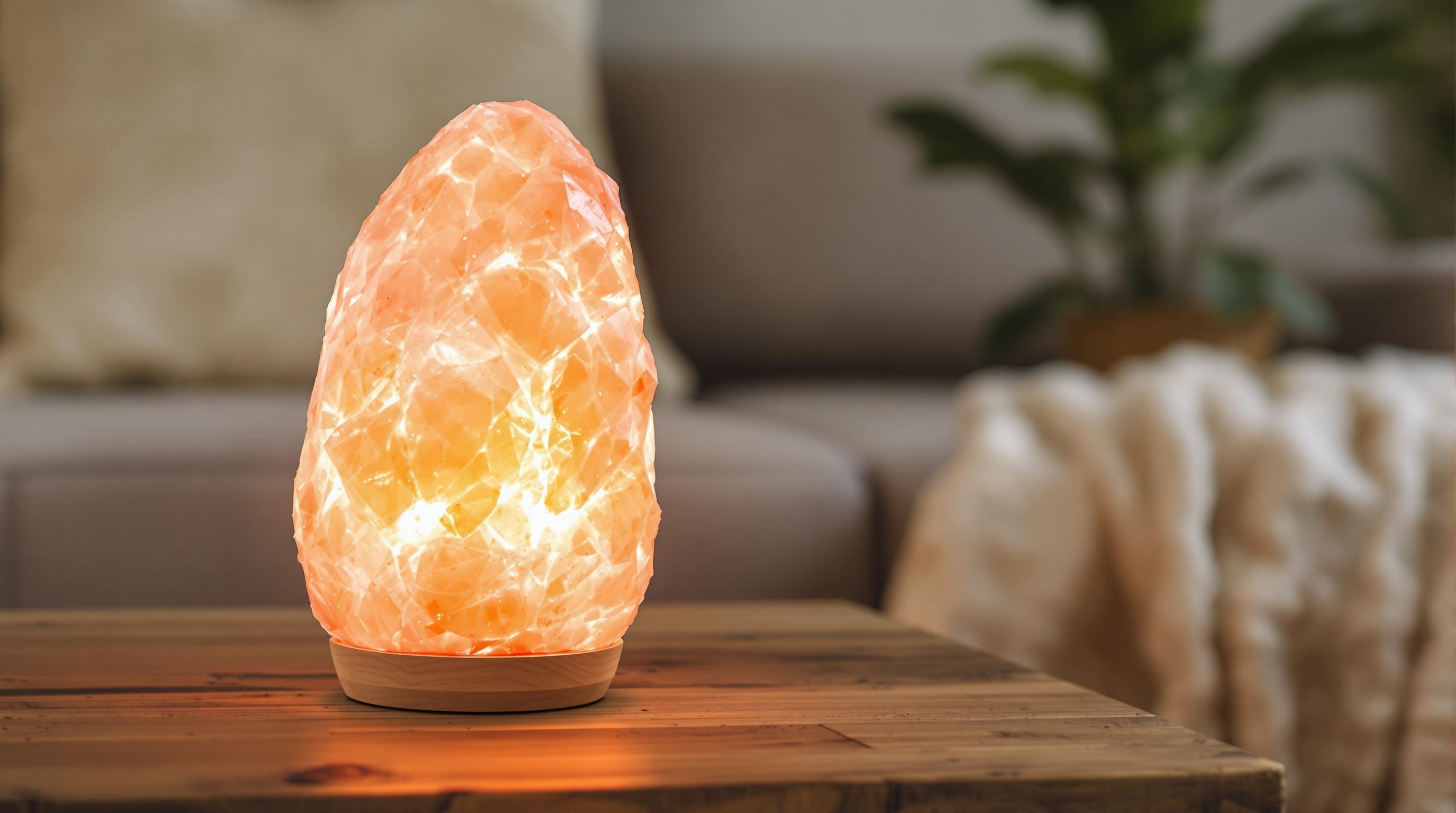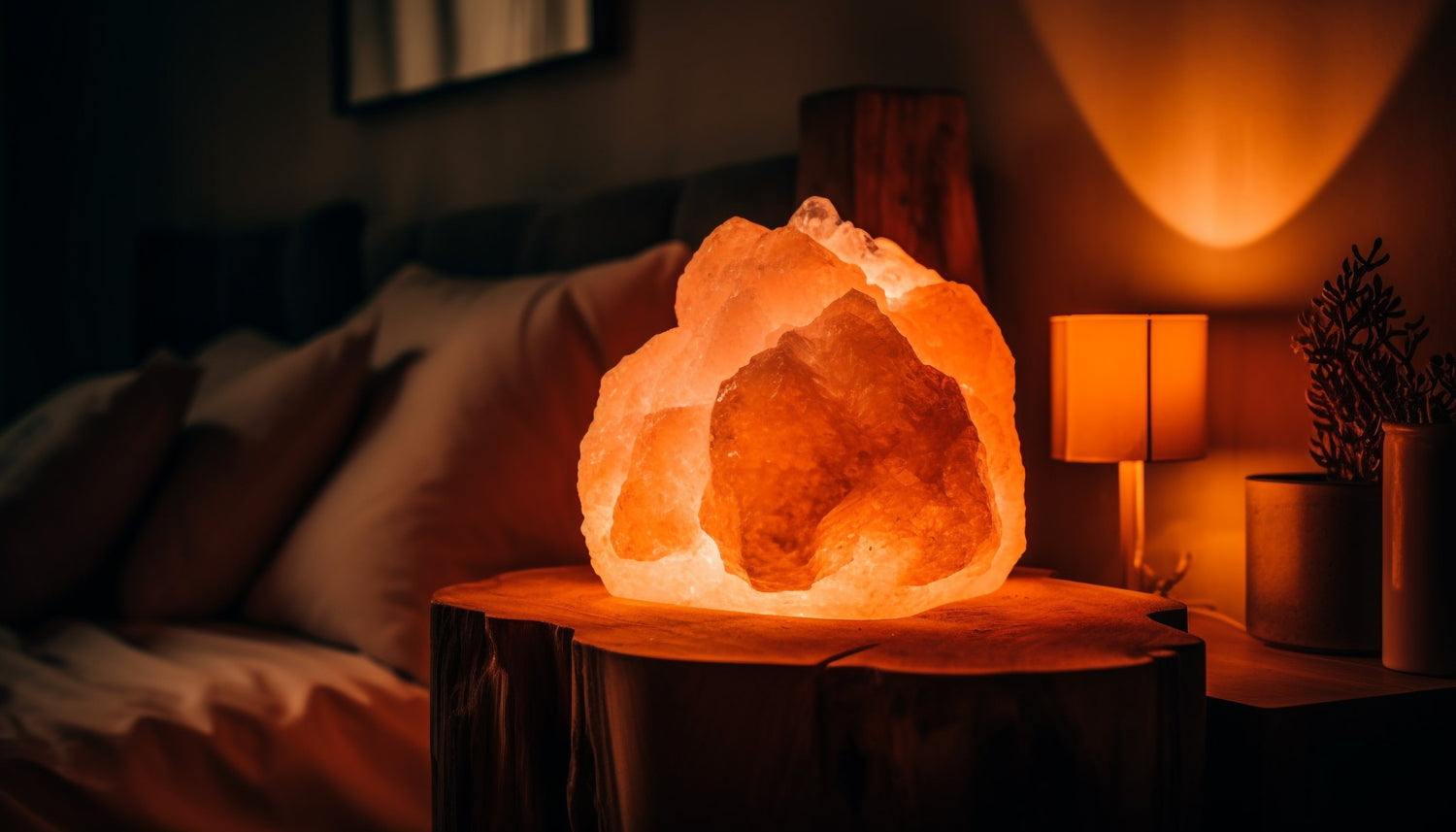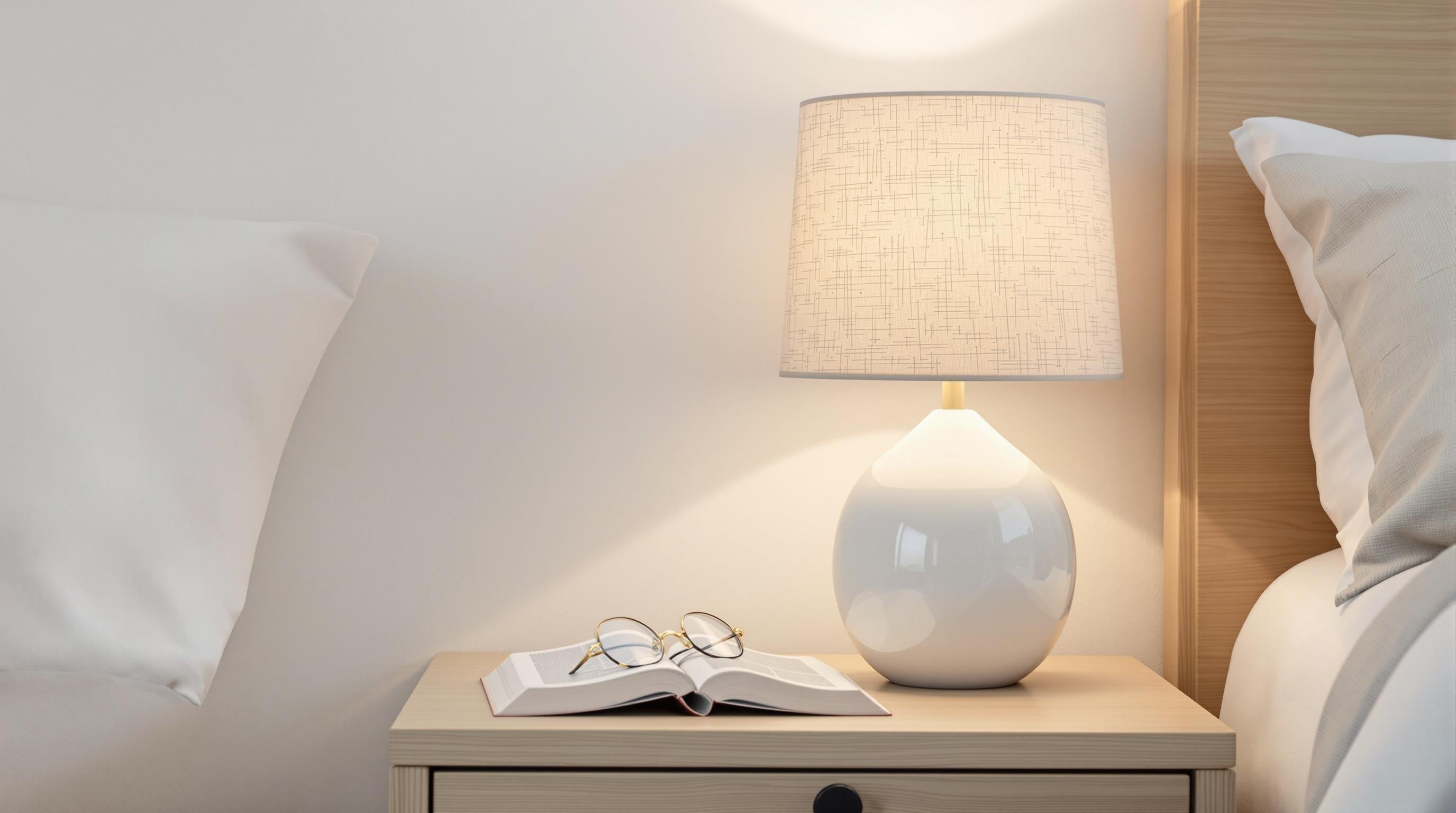You've probably noticed these orange-glowing lamps in specialty stores and wondered if they're really worth it? Sourced from Himalayan salt mines dating back over 250 million years, these lamps are enjoying growing popularity in interior design and wellness practices. In this article, discover their true benefits, our advice on choosing and maintaining them, and everything you need to know before purchasing one.

Supposed benefits of salt lamps
Himalayan salt lamps are often touted as true allies of well-being. Their devotees attribute numerous virtues to them, such as purifying indoor air thanks to their natural ionizing properties. They are also credited with improving sleep quality and reducing stress, particularly thanks to their soft amber light.
Effects on air quality
Salt lamps affect the air in your home through two main mechanisms. First, the salt naturally absorbs ambient humidity. Then, once heated by the bulb, it releases negative ions that capture airborne particles like dust or pollen.
For these effects to occur, a few conditions are necessary:
-
The lamp should be on at least 5-6 hours a day
-
The bulb must be incandescent (minimum 15W) - LEDs do not get hot enough
-
The size of the lamp should be adapted to the room (approximately 2-3.5 kg per 10 m²)
Be careful, however: although many users report an improvement in their indoor environment, no scientific study has yet proven the actual effectiveness of these lamps in purifying the air. They are better seen as a pleasant addition rather than an alternative to certified air purifiers.
Impact on well-being
Salt lamps are known for their ability to emit negative ions into the air. These ions, naturally present in certain environments such as forests or seaside, are said to have a calming effect on our bodies. Many users report a feeling of calm and relaxation when using their lamp.
The most notable impact is on concentration. Negative ions are said to promote a more alert and productive mental state, particularly appreciated during work or study sessions. This is why these lamps are often found on desks or in workspaces.
Although these effects are widely reported by users, it's important to note that the amounts of ions emitted by salt lamps remain modest. Their influence on well-being could also be linked to their soft light and the relaxing ambiance they create.
To fully enjoy these benefits, whether it's negative ions, improved concentration, or a soothing ambiance, it's essential to choose a lamp that's suited to your specific needs. Size, salt quality, and lighting type are all factors that will influence your lamp's effectiveness. Let's explore the key points to consider when making your selection.
Tips for Choosing a Salt Lamp
Whether it's a simple Salt Lamp , a classic Salt Lamp , a Designer Salt Lamp or a Himalayan Salt Lamp , there are several essential criteria to consider when making the right choice. The quality of the salt, the size suited to your space and the ideal location are all elements that will influence your satisfaction. Here are our tips for making the best possible choice.
Quality criteria
An authentic salt lamp is first recognized by its color. It should have a natural hue ranging from light pink to dark orange. This variation is due to the presence of iron in the salt.
Quality is also verified by its reaction to humidity.
To ensure a successful purchase, make sure the lamp has a wooden base. For lighting, choose an E14 bulb of at least 15 watts. The heat it emits is important for the lamp to function properly.
Last point: each piece is unique. Variations in shape and structure are normal since these lamps are hand-carved. This is even a guarantee of authenticity.
Size and location
The size of your salt lamp should match the space you plan to install it in. This is the first rule to follow.
For a small room up to 10 m², opt for a lamp weighing 1 to 3 kg. If your space is around 20 m², a lamp weighing 3 to 5 kg will be more suitable. For larger rooms of 30 m², opt for a model weighing 7 to 10 kg.
Choosing the right location is just as important. Choose places where you spend a lot of time: the living room for your relaxation, the bedroom near your bedside table, or even your desk. Simply keep a distance of about one meter between you and the lamp.
Maintenance and precautions for use
Your salt lamp requires some special attention to maintain its beauty. Regular maintenance and a few simple precautions will allow you to enjoy it for many years to come. Discover our essential tips for caring for your lamp and avoiding problems related to humidity.
Cleaning and maintenance
Monthly maintenance of your salt lamp is essential to prevent crystallization and clouding. Here are the simple steps to follow:
-
Turn off and unplug your lamp, then wait for it to cool.
-
Carefully remove the bulb.
-
Wipe the surface with a soft, dry cloth to remove dust.
-
For stubborn deposits, use a soft toothbrush.
Important: Avoid water! A very slightly damp cloth is sufficient if necessary. In this case, let it dry completely and turn the lamp back on for an hour.
For optimal performance, turn on your lamp for 3 to 4 hours per day. Choose a bulb that's appropriate for your lamp's weight: 15-25W for 2-5 kg, 25-40W for 5-10 kg, and 40-60W for anything over 10 kg. These little touches will help your lamp maintain its beauty.
Precautions to take
Water is your salt lamp's number one enemy. Never submerge it in water and avoid placing it in humid rooms like the bathroom or kitchen. Instead, choose a dry location, away from windows prone to condensation and sources of moisture like humidifiers or aquariums.
To protect your furniture, always place your lamp on a suitable surface. A waterproof coaster or wooden underlay will work perfectly. This is important because salt can sometimes drip slightly—this is normal, but it should be anticipated.
Also consider safety: keep your lamp out of reach of children and regularly check its electrical wiring. If you notice significant cracks or damage to the cable, it's time to have it repaired or replaced.
Origin and manufacture of salt lamps
Salt lamps come from mines located in Pakistan's Himalayan region. Blocks of pink salt are extracted from these mines and then processed by local artisans. The manufacturing process is quite simple: the salt block is first hollowed out to accommodate the bulb, then carved and polished to give it its final shape.
Origin of salt lamps
The salt lamps come from the Khewra mine in Pakistan, a remarkable site spanning over 110 km² of underground galleries. This mine, discovered over 2,300 years ago by the troops of Alexander the Great, is now the second largest salt mine in the world. Its unique architecture includes majestic chambers and tunnels adorned with illuminated salt sculptures, attracting thousands of visitors each year. Its beautiful pink hue comes from its rich oxidized iron content. In the deep galleries of the mine, the salt is extracted by hand, protected from modern pollution. This guarantees its exceptional purity. Miners still use traditional techniques passed down from generation to generation, combining picks, hammers, and small explosives to delicately extract the precious blocks of salt.
Manufacturing process
The making of a salt lamp begins with the selection of a good-quality raw block. Artisans then hand-carve it into its final shape. They use specialized tools to gradually cut, sculpt, and polish it. The crucial step is drilling: they delicately carve a cavity to accommodate the lighting system. Once the block is ready, they install a wooden base that will serve as a stable support. The electrical assembly is simple but precise: a socket, an energy-saving light bulb, and a power cord. Finally, they carefully secure the salt block to its base. Each piece is unique as salt naturally varies in color and structure.




Leave a comment
This site is protected by hCaptcha and the hCaptcha Privacy Policy and Terms of Service apply.